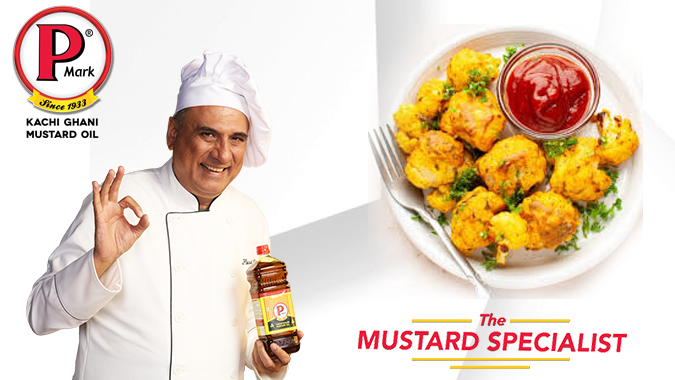
The Pakora Mood continues! In an earlier post, we talked about the innate “Indian-ness” of the Pakora having originated in India thousands of years ago. We also talked about the enormous variety of Pakoras that exists across the country.
In today’s post, we will explore another delightful Pakora that’s a hot favourite during the festive season – the Paneer Pakora. Some folks think that the Paneer Pakora is something that vegetarians have to reluctantly make do with while their non-veg friends are tucking into Chicken Pakoras. Rubbish! If made properly the Paneer Pakora can be just as enticing as any other non-veg counterpart. The real skill lies in the art of combining the right spices to make the flavour of this dish come alive.
So let’s get started on our exciting, mouth-watering homemade version of the legendary Paneer Pakora. Here are the ingredients that you will require.
Ingredients:
- Indian Cottage Cheese (Paneer): 200 grams
- All Purpose Flour (Maida): 4 tablespoons
- Gram Flour (Besan): 2 tablespoons
- Corn Starch: 1 tablespoon
- Mustard Oil: 100 millilitres
- Cumin (Jeera) Seeds: 1 teaspoon
- Red Chilli Powder: 1 teaspoon
- Turmeric (Haldi) Powder: Just a pinch
- Carom (Ajwain) Seeds: Half a teaspoon
- Coriander (Dhania) Powder: 2 teaspoons
- Breadcrumbs: 12 tablespoons
- Black Pepper Powder: Half a teaspoon
- Salt: to taste
The quantities mentioned above are for preparing two servings. Adjust the quantities proportionately to suit the number of servings that you require.
Preparation:
Cut the Paneer into slices that are around one inch by one inch in length and breadth, and around half an inch thick.
Dry-roast the cumin seeds.
Crush the carom seeds using the back of a spoon.
Spread the breadcrumbs out on a plate or a tray.
In a mixing bowl add the Paneer slices, red chilli powder and turmeric along with one teaspoon of coriander powder and one teaspoon of salt. Mix well to ensure that the Paneer slices are well-coated in the spices – but do this gently so that the Paneer slices do not break into smaller pieces. Keep aside.
Method:
Let us get started on making the batter for your Paneer Pakoras. In a bowl, add the all purpose flour, gram flour, corn starch, dry-roasted cumin seeds, ground carom seeds, black pepper powder and salt to taste. Add the salt carefully, taking into account the fact that you have already added salt to the Paneer and spices mixture. Also add the remaining teaspoon of coriander powder. Mix well. Then add a little water to the mixture and then whisk it to create a smooth batter making sure that it isn’t too watery in consistency. That’s why it is best to add the water a little at a time.
Heat the Mustard Oil in a pan on a High flame. When the oil reaches its smoking point streams of aromatic white smoke will rise from the surface of the hot oil. Reduce the flame to Medium. The oil is now ready for you to begin the deep-frying process.
Take a piece of spice-coated Paneer and dip it into the batter. Then roll the batter-coated Paneer piece on the breadcrumbs, ensuring that the piece is well-coated in breadcrumbs. Repeat the process for all the pieces of Paneer. Use the palms of your hand to ensure that the breadcrumbs adhere properly to the batter-coated Paneer.
Now, place the Paneer pieces in the hot oil and deep-fry. It will take a minute or so for one side to be fried. Then turn the piece over and ensure even frying on both sides. You may need to flip the piece over several times till the Pakora becomes crisp and crunchy. It is best to fry the Pakoras in batches to avoid burning them.
Many people prefer to place the Pakoras on paper towels after deep-frying in order to drain the excess oil – but that’s unnecessary when your deep-frying medium is cold-pressed Mustard Oil. This oil is a very healthy cooking medium that is scientifically proven to be absorbed into food in very small amounts during deep-frying. So relax!
Your traditional Paneer Pakora is now ready. Serve them hot with chutney, sauce or any other dip of your choice. Even your non-vegetarian friends will start asking for more – wait and see!
You can find more recipes at : https://www.purioilmills.com/recipes-in-english/









